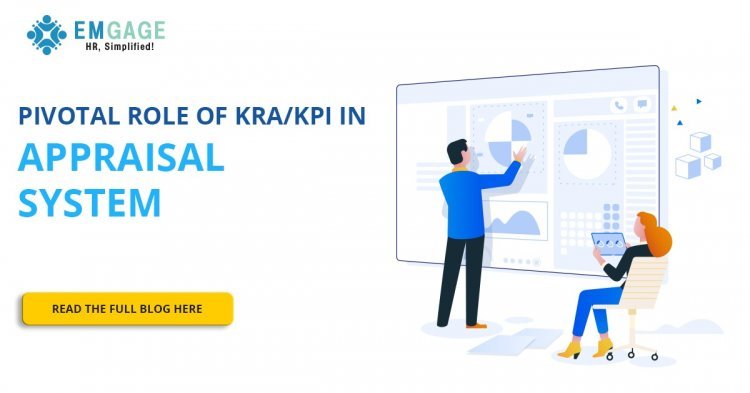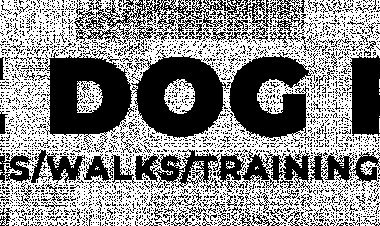Pivotal Role of KRA/KPI in Appraisal System
Performance strategy should be evaluated not only to improve employee performance but also to determine whether the work aligns with the company goals while allowing the employees to grow and produce better results. However, 77% of HR believes that performance reviews aren’t an accurate representation of employee performance. So, where is it going wrong? Read More: https://emgage.work/blog/pivotal-role-of-kra-kpi-in-appraisal-system/

Performance strategy should be evaluated not only to improve employee performance but also to determine whether the work aligns with the company goals while allowing the employees to grow and produce better results. However, 77% of HR believes that performance reviews aren’t an accurate representation of employee performance. So, where is it going wrong?
Performance management helps managers to evaluate employees’ overall contribution to the organization and monitor productivity. It is a continuous process of reviewing employee performance. Studies have shown that more frequent feedback improves employee learning and task performance but incessant feedback can decrease performance due to employees being overwhelmed.
There is confusion between the terms KRA (Key Responsibility Areas) and KPI (Key Performance Indicators), for most people. The terms are used interchangeably in some cases, which is not valid. While the terms themselves are related, both have a distinct definition.
What is the difference between KRA and KPI?
KRAs or Key Performance areas refer to the general area of output within the organization, for which an individual employee or a group of employees are responsible. They are a list of goals that guide an employee to do their job and remain aligned with the company objectives. KRAs help define the scope of a department and they are essential for an organization to be successful.
KPIs are an indicator set in place to measure KRAs and they can be estimated using metrics. Adopting industry-standard KPI may not be effective for your business. KPI is said to be a form of communication and hence clear, and relevant information is more likely to be understood and utilized properly. To construct KPIs, your team should reflect upon organizational objectives and put together a plan of action to achieve them. The process is repetitive and aided by feedback from analysts, department heads, and managers.
KRA must be specific, understandable, and quantifiable. Instead of making exaggerated goals sound meaningful, you need to focus and figure out what the goals look like and how to measure them. KRAs should be S.M.A.R.T. (Specific Measurable Achievable Realistic Timely) and should define the job profile. They need to fit the position and must be well documented. KRAs could vary from organization to organization and as per the work profile but they should give a general description of the work expected and also outline the key areas where the employee is expected to deliver.
The steps suggested for setting up KRAs/KPIs are:-
- Go through the job description of the employee. If not updated, then contact the employee/manager.
- Try and find out exactly what the employee is supposed to achieve.
- Make a list of functions and responsibilities which are essential to the employee’s job.
- Categorize these functions into quantifiable and non-quantifiable.
- The quantifiable ones are to be converted to Goals or KRAs.
- List all critical functions.
- Write a concise definition of each Goal (KRA).
- If following the BCA (Balanced ScoreCard), categorize each goal into Financial, Learning and Growth, Internal Business Process, and Customer.
- Describe each KRA. Mention a measurable target and an achievable time frame.
What are the characteristics of Effective Performance Appraisal?
The effective appraisal system criteria are as follows: –
- Bias-free system: The evaluation must be fair and non-discriminatory.
- Relevance: The measure of behavior should not be influenced by personal traits but by the level of success.
- Acknowledgment: The methods and the criteria of appraisal should be developed by collaboration.
- Reliability: It must be dependable and consistent. The results of multiple evaluators should produce similar results hence it must be reliant on science.
- Sensitivity: The method must not be based on an average for comparison. Since the average is a relative comparison and not indicative of effectiveness, the method should be able to distinguish between a good and an ineffective employee.
- Understandable: It must be practical and transparent and should not cause any uncertainty.
How can Performance Management Software help monitor KPIs and KRAs?
- Documentation: Performance management software keeps track of KPI and KRA at all times and documents them. This way employers can compare performances and employees and gauge their performance to manage their work accordingly.
- Metrics: You can apply your metrics to evaluate data according to your specifications. Measuring data with custom ratings ensures that the review is free of any bias.
- Notifications: The software can send reminders or notifications automatically to conduct reviews following the timeline and company policy for review cycles.
- Variance: The software can analyze to figure out if an employee’s performance has deviated from standard or if the KPIs and KRAs need any re-evaluation or adjustments.
- Reports: Generation of KRA-KPI allows a comprehensive view of performance to examine and observe any gaps and take the subsequent required action.
Conclusion
KPI and KRA are determining factors of the performance management system and the appraisal system. 70% of employees felt valued and 68% reported receiving more valuable feedback with more consistent performance management statistics. Even if your system is detailed and structured, it can still fail without proper implementation. Tracking, monitoring, and documenting KRA and KPI manually is time-consuming and exhausting. Performance management software can automate the process and ensure efficiency.


 EmgageHR
EmgageHR 



















